How to get rid of earwigs – 5 quick ways to banish them from the house
Wondering how to get rid of earwigs and why they're indoors? These expert tips will keep this creepy crawly away for good
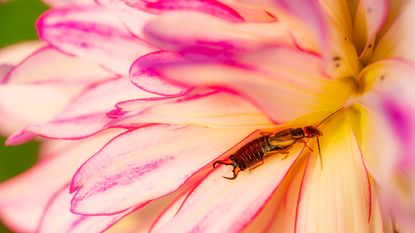

If you're looking for advice on how to get rid of earwigs, it's likely that you've had a sighting of the pincher bug, as they're also known, in your home. However, before you look for a solution to the problem, it's important to know that while the sight of earwigs might make the hairs on the back of your neck bristle, they are completely harmless to humans.
That said, though, if you find earwigs a nuisance, there are easy cleaning tips and prevention methods to help you get rid of this pest for good. Here, pest experts advise how to get rid of earwigs, indoors and out.
How to get rid of earwigs – effective tips for quick success
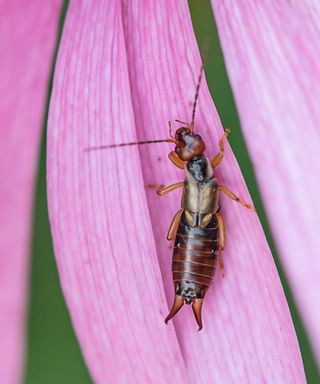
Whether it’s a good idea to banish earwigs isn’t as clear cut as the question of getting rid of fruit flies. John Melchior from Kapture Pest Control urges you to pause and decide whether you want to get rid of earwigs from your home. While this may seem like an easy answer, he explains that the creature does come with its benefits, especially if you're looking to preserve your best indoor plants.
'I tell my clients that a single earwig sighting in the home isn't necessarily a reason to panic. These bugs are beneficial in some ways,' he says. 'They eat other insects that feed on plants in the house or garden and nestle inside some perennial flowers to munch on dead bugs and pollen. If you see an earwig in the house, it could have ridden in on some cut flowers.'
If you decide you want to get rid of the earwigs in your home, the following five tips should lead to quick success.
1. Vacuum all earwig activity
According to Megan Wede from Done Right Pest Solutions, the process begins with your vacuum cleaner. She recommends inspecting all affected areas before identifying the earwigs and vacuuming up all visible activity.
'Next, you'll want to shake down items. Earwigs like to hide, and they can hide in the strangest of items, household items, and outdoor furniture items. Shake these items out to dislodge any harboring earwigs. Vacuum those earwigs up too,' she instructs.
2. Use a soap and water solution
An alternative to vacuuming is a simple soap and water solution that is favored by Truly Nolen's Technical Manager, Mike Duncan. He recommends using making a homemade bug spray with the two ingredients before spraying the liquid on the affected areas.
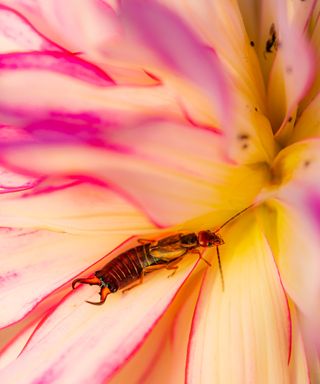
3. Apply boric acid to infested cracks
Truly Nolen's Technical Manager, Mike Duncan suggests that boric acid is equally as powerful in your fight against earwigs. He recommends carefully applying the acid to any cracks where you notice pest activity. 'Earwigs will hide in cracks and crevices where there is high moisture. Often, this can be in kitchen and bathroom areas or in gaps at the baseboards,' he adds.
4. Eliminate excess moisture
After removing the earwigs, Megan Wede from Done Right Pest Solutions suggests eliminating moist areas around your home to prevent any from returning.
'Earwigs love damp areas, so if you've ever had a pipe leak in a wall void, this is a perfect condition for earwig populations to grow,' she says. Be on the lookout for any warping or bulging siding, as it means there has been water damage within that wall. Be sure to remove that source of harborage condition.'
5. Set up a dehumidifier
While investing in a new dehumidifier may not eliminate existing earwigs, it will improve the chance of them not returning.
'If you set up a dehumidifier, it will dry up some of the moisture, which should help create unfavorable conditions for earwigs and silverfish within your home,' says Megan Wede from Done Right Pest Solutions. So, if you're looking for an excuse to pick up one of the best dehumidifiers on the market, this expert has given you full permission.
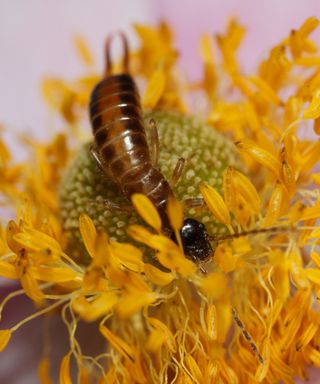
How to get rid of earwigs naturally?
Like many other insects, earwigs don't like strong scents and you can harness this knowledge in the same way you might in getting rid of mosquitoes and deterring wasps. You can use the following to help keep them away:
- White vinegar
- Peppermint oil
- Eucalyptus oil
- Rosemary oil
- Clove oil
- Lavender oil
- Lemon
- Basil
- Cinnamon
What causes lots of earwigs?
It is important to note that most earwigs prefer to thrive outside, so knowing how to get rid of earwigs in your yard is important. However, they are occasionally tempted by moisture inside a home.
'An earwig's habitat is preferably on the exterior of the house. Their food sources include decaying plant and animal matter. They live in damp areas and tend to hide during the daytime under leaf and mulch material around a home,' Truly Nolen's Technical Manager, Mike Duncan.
'If they are invading the interior of the home, it generally means that the environment has changed. This could be the high temperatures and low rainfall or too much rain that drives them inward.'
Why do I suddenly have earwigs in my house?
Earwigs will come into your house looking for food and shelter. Usually they like to eat rotting vegetation, with many living in plants and flowers, doing a useful job. If they are coming inside, it may be that conditions outside are unfavorable – perhaps it is very dry and hot – and that conditions inside are more inviting.
Sign up to the Homes & Gardens newsletter
Decor Ideas. Project Inspiration. Expert Advice. Delivered to your inbox.

Megan is the Head of Celebrity Style News at Homes & Gardens. She first joined Future Plc as a News Writer across their interiors titles, including Livingetc and Real Homes, before becoming H&G's News Editor in April 2022. She now leads the Celebrity/ News team. Before joining Future, Megan worked as a News Explainer at The Telegraph, following her MA in International Journalism at the University of Leeds. During her BA in English Literature and Creative Writing, she gained writing experience in the US while studying in New York. Megan also focused on travel writing during her time living in Paris, where she produced content for a French travel site. She currently lives in London with her antique typewriter and an expansive collection of houseplants.
-
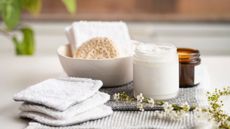 5 items I never throw out – and how I reuse them around my home
5 items I never throw out – and how I reuse them around my homeI share the five things I never throw out when I can help it, and reveal the five ways I reuse them around my house to help limit the impact on the environment
By Chiana Dickson Published
-
 Michael Douglas and Catherine Zeta-Jones' simple kitchen cabinet color is a masterclass in balance and contrast
Michael Douglas and Catherine Zeta-Jones' simple kitchen cabinet color is a masterclass in balance and contrastA classic cabinet color shines in the actors' kitchen. The actors space proves why this traditional look is always in style
By Sophie Edwards Published
-
 7 dorm room organizing rules for less clutter and more space
7 dorm room organizing rules for less clutter and more spaceExperts offer their top tips for creating a well-organized dorm room, no matter the size, space, or layout.
By Ashley Chalmers Published
-
 How to maximize storage in a small or shared dorm room, according to pro organizers
How to maximize storage in a small or shared dorm room, according to pro organizersFind out all the hidden storage zones you might never have noticed
By Ashley Chalmers Published